Training aircraft gunners has always been a task requiring some creativity, as it requires a lot more than just a paper target for an infantryman to blast away at. In the very early years of aerial combat in WWI, a wide variety of ideas were considered, and one of the better ones was building a gun-shaped camera. In this way, a trainee could engage in a very realistic and yet safe dogfight, and the photographic evidence would allow him and his instructor to assess his performance. One particularly neat early gun camera was the Hythe MkIII:
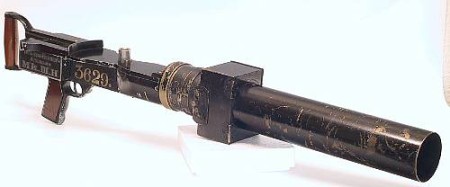
A lot of careful thought went into the Hythe, far beyond simply a camera in a gun-shaped shell. For starters, it was made in 1915 to very closely match the handling, balance, and weight of a Lewis Gun (one of the most common aerial guns at the time with British and US forces). It could be fixed to the top wing of a biplane or on a flexible ring mount just like a real gun, and was maneuvered and aimed exactly like a real Lewis. The shutter was tripped by the trigger, just like a gun, and film was advanced by using a replica of the Lewis’ charging handle. In addition, a real Lewis magazine mounted atop the device, and could be changed just like a Lewis (we’ll elaborate on that in a moment).
As far as camera hardware, the film canister and exposure area was located in the square box at the rear of the cooling jacket. It used 120mm film, and could hold 12 or 16 frames worth (sources vary on this point). A shutter and lens were located near the muzzle end of the device:


The Hythe must have been designed with input from aircraft instructors, because its operation uses the procedures most important in dogfighting of the era. Ammunition was more limited on a Lewis than with a belt-fed weapon, and the camera only held a handful of pictures. So the student’s goal would be to make a clean hit on an enemy aircraft with his first shots, not attempt to “walk it in”, which would waste a great deal of ammo. The initial trigger pull on the Hythe snapped a photo, so it was only the initial aim that was recorded for evaluation. To take a subsequent photo, the gunner would have to rack the “gun’s” charging handle, an operation that any good gunner should learn to do instinctively. In addition, the Hythe had a device inside that would punch a small hole in the edge of the film, and that device was operated by removing and replacing the Lewis magazine from the top of the “gun”. Proper practice would require changing magazines between strings of fire (another operation the gunner should become able to do blindfolded and upside down), and the Hythe would leave definite evidence of whether the trainee actually did so.
Of course, using a gun camera for marksmanship practice is only useful if the camera can actually show precisely where the gunner was aiming – and the Hythe took this into consideration as well. In front of the film was located a glass plate with a reticle, which would be superimposed on each photograph. For initial setup, the film canister could be replaced by a mirror, and the reticle plate adjusted to precisely match the sights atop the “gun”. This allowed the Hythe to actually give useful feedback to a gunner.
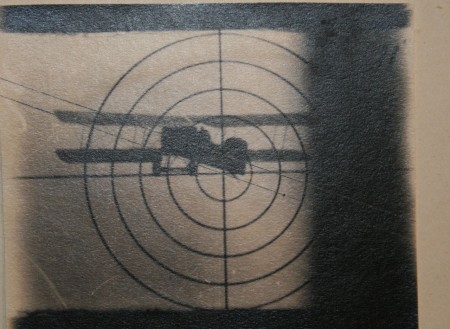
All in all, it’s one of the cooler not-really-a-gun items we’ve come across in some time. The Hythe was actually in official British use all the way up to 1934, when it was finally replaced by more modern gear (and the Lewis guns were on their way out as aircraft armament). I’ll leave you with a few more photos, including a couple showing the Hythe in period use:
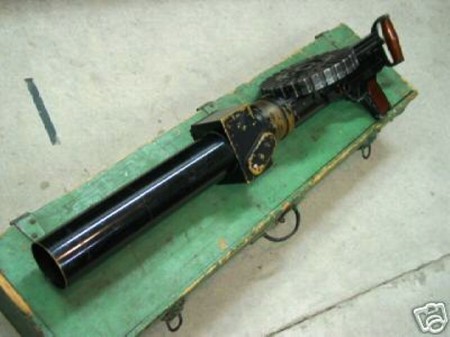
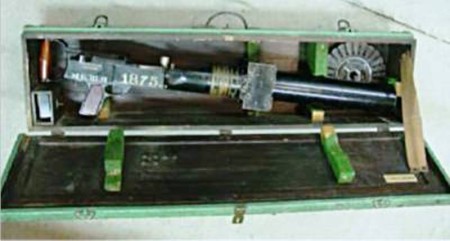
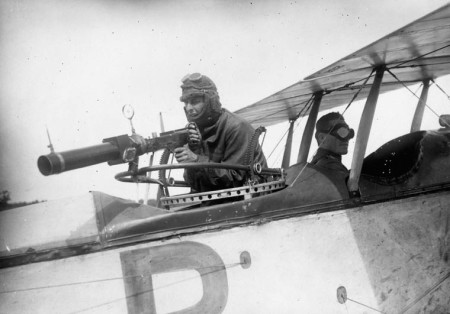
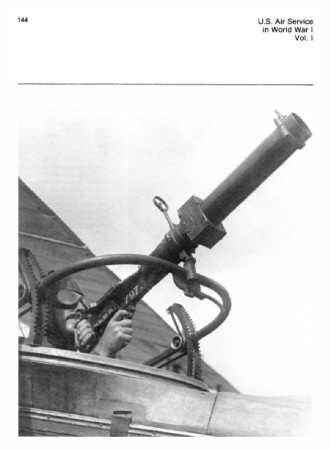


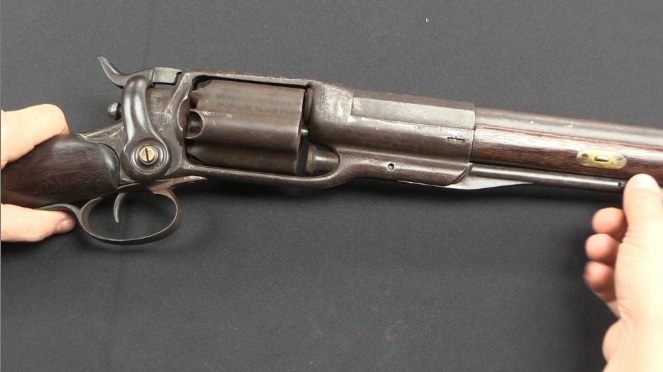
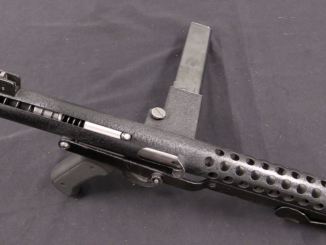
Twelve, sixteen, and twenty four exposure rolls of 120mm film all come on the same size core. Looking at the Hythe film magazine, all should fit without a problem. The ODs of the longer film rolls are not much larger than the 12 exposure rolls, about 8mm by my measurement. This size film is still used in Rollei, Hasselblad, and other medium format cameras.
All 120 film is the same length, which is about 30 inches (give or take, depending on the manufacturer – some fit up to 33 inches on the spool.) It has a paper backing over the entire length of the film.
The difference in the number of exposures comes from the format the individual camera shoots. Unlike 35mm film, where the image is always 24x36mm, 120 cameras are available in a variety of image formats; the most common today are 6×4.5cm, 6x6cm, and 6x7cm. A 6×4.5 will usually shoot 16 exposures on a roll, 6×6 will net 12, and 6×7 will only get 10 frames per roll. So, the number of shots is dependent on the format in which the camera shoots.
In the case of the Hythe, the picture of the film holder suggests that it is close to 6×4.5cm, which would yield 16 frames per spool. It’s possible that they produced more than one format for the camera during its production, however, which would account for the varying exposure quantities.
The confusion in film length comes from the fact that there is another film which is sometimes (though not always) compatible with 120 cameras: the 220 spool. 220 carries twice the length of film on a thinner core but with the same external dimensions. To achieve that the paper backing is deleted; there is only a paper leader at each end, just enough to cover the film itself when rolled up.
Not all 120 cameras will accept 220 film; they are not completely interchangeable. Those which use a window to count exposures cannot use it, as the paper backing is what keeps the little window from fogging the film. Also, cameras which have a fixed platen (the plate against which the film is flattened when behind the lens) usually won’t work well with the 220 film, because the lack of paper backing has the effect of thinning the film – which means the image isn’t focused at the same spot, and also that the film can buckle. Both lead to fuzzy pictures.
(Some specialized 120 cameras used a gear mechanism to count exposures, stopping film advance when a measured amount of film had passed. These usually reset when the spool was removed, meaning that they would waste half of a 220 roll.)
In any case, the 220 format wasn’t invented until the mid-60s – so the Hythe was most assuredly not designed with it in mind! While a 220 roll might in fact fit into the Hythe, it may or may not work properly and certainly would not have been used in the era the camera was.
Cool, thanks for the explanation – as you may be able to tell, cameras are not my specialty. 🙂
Hello, Grant :
When you say that the paper backing ( on 220 film ) is what keeps the counter window from fogging the film, I take it that you mean surface smearing from frictional contact with the inside face of said window?
Thanks for the interesting post — I learned a lot from reading it.
No – actual light infiltration. The windows were typically red or orange to cut down the amount of light passed (and make them safer with orthochromatic emulsions), but the paper itself is opaque to keep the light from getting to the film on the other side.
Oh, and it’s 120 film which has the paper backing – not 220.
Only criticism: it’s 120 film, not 120mm film. The film is about 6cm across (or 60mm) not 120cm. 120 is just the number designation, like how 35mm is 135 film, and 110 film. Only large format films use their physical size as their identification instead of a number code.
On the subject of pioneers in medium-format film technology, let’s not forget Arriflex either.
Huh? How is a company known for 16mm and 35mm movie cameras a pioneer in medium format still photography?
Sorry for the misunderstanding, got it mixed up with something else :)!
No problem – I get mixed up myself sometimes!
Very interesting. My son (11yo) and I have been looking for info on this “gun”, because it was my great grandfather that designed it, Major Henry Edward Chaney.
He was Chief Instructor, and later Commandant, of the Royal Flying Corps School of Aerial Gunnery, in Hythe during WW1.
He is credited as the first to experiment with firing machine guns in aircraft.
this is gonna be weird but it seems like we are related?? Henry is my great grandfather too 🙂
He is super interesting!! Not only for his work in the RAF, did you know he was in the olympics ?! He competed in the 300 metre free rifle event in 1908
Yes – knew about the olympics. OBE too.
Has a very interesting story behind his death too – I presume you know that one?
We are descended from his son, Henry Lewis Chaney.